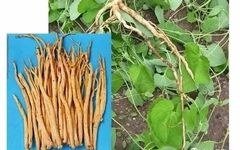To prevent losing this next time!
The root of Dang Shen (Codonopsis pilosula) is a traditional Chinese medicinal herb known for its nourishing properties. It is also a health food that can strengthen the spleen and stomach, enhancing overall vitality. Today, we will introduce the benefits and effects of Dang Shen root, as well as its side effects and contraindications.
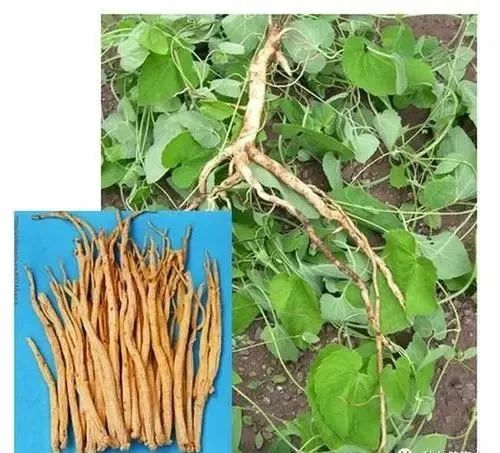

The Effects and Benefits of Dang Shen Root

1. Strengthening the Spleen and Nourishing the Lungs
Dang Shen root is beneficial for replenishing lung qi and strengthening the spleen and stomach. It can alleviate symptoms such as reduced appetite, abdominal distension, and indigestion. Additionally, for individuals suffering from chronic cough, shortness of breath, and palpitations due to insufficient lung qi, taking Dang Shen root can help relieve these symptoms. When combined with other herbs like Huang Qi (Astragalus) and Bai Zhu (Atractylodes), its effects on the spleen and lungs are enhanced.

2. Nourishing Blood
Dang Shen root not only replenishes qi but also nourishes and replenishes blood. It promotes the regeneration of red blood cells and accelerates the synthesis of hemoglobin, helping to maintain a state of sufficient qi and blood. It is particularly effective in alleviating iron-deficiency anemia. Furthermore, for individuals experiencing fatigue, pale complexion, dizziness, and palpitations, taking Dang Shen root can help reduce these symptoms.

3. Generating Fluids and Quenching Thirst
Another important function of Dang Shen root is generating fluids and quenching thirst. It can alleviate symptoms such as sore throat, dry mouth, and bitter taste, making it especially suitable for individuals who speak frequently. Additionally, it has anti-inflammatory and antibacterial properties, enhancing the body’s resistance to viruses and providing some preventive effects against bronchitis, pharyngitis, and stomatitis.
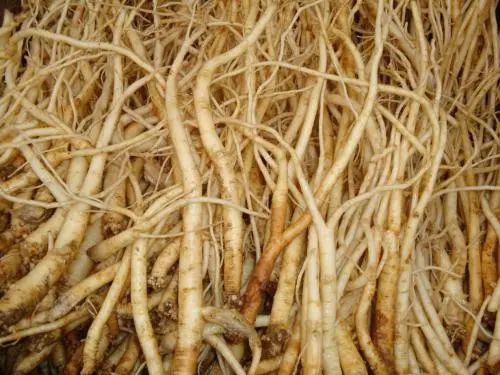

Contraindications of Dang Shen Root
While Dang Shen root can strengthen the body and enhance disease resistance, there are some contraindications to be aware of. Most importantly, it should not be consumed with Li Lu (Veratrum) as it may cause poisoning. Additionally, individuals with symptoms of qi stagnation should avoid it, as it may adversely affect health. Long-term excessive consumption of Dang Shen root is also prohibited, as it may lead to constipation and oral ulcers.

Dang Shen
This product is the dried root of the plant Codonopsis pilosula, belonging to the Campanulaceae family. It is primarily produced in Gansu and Sichuan provinces. The roots are harvested in autumn, cleaned, and dried. The best quality is characterized by thick, soft texture, strong aroma, and no residue when chewed. It can be sliced thickly and used either raw or stir-fried with rice.
Identification of Traditional Chinese Medicine: This product appears as thick, round slices. The outer skin is grayish-yellow, yellow-brown to gray-brown, sometimes with numerous warty protrusions at the root tip. The cut surface shows a light brown to yellow-brown skin and a yellowish to yellow wood part, with cracks or radial patterns. It has a special aroma and a slightly sweet taste.

Properties: Sweet, Neutral. Channels: Spleen and Lung.
Main Functions: Strengthening the Spleen and Nourishing the Lungs, Nourishing Blood and Generating Fluids. Indications: Spleen and Lung Qi Deficiency, Poor Appetite, Fatigue, Chronic Cough, Insufficient Qi and Blood, Pale Complexion, Palpitations, Shortness of Breath, Qi and Fluid Deficiency, Shortness of Breath with Thirst, Internal Heat and Thirst.

Dosage: Decoction, 9-30 grams.
Precautions: Not suitable for use with Li Lu.
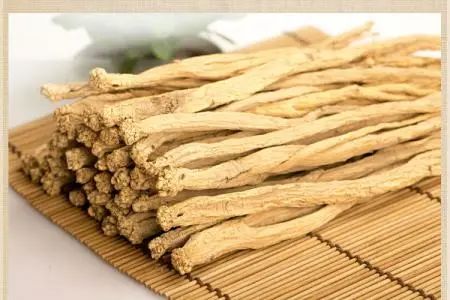
Modern Pharmacology: The decoction of Dang Shen can regulate gastrointestinal motility and has anti-ulcer effects. The decoction stimulates the release of gastrin. Dang Shen saponins can inhibit gastric acid secretion and protect the gastric mucosa. Dang Shen polysaccharides promote the growth of Bifidobacteria and regulate intestinal flora imbalance; they can increase peripheral blood hemoglobin and enhance the compensatory hematopoietic function of the spleen, improving leukopenia caused by chemotherapy and radiotherapy. Additionally, Dang Shen enhances immunity, dilates blood vessels, lowers blood pressure, and improves microcirculation.

Selected Formulas
1. Emergency Treatment for Collapse: Generally, Ren Shen (Ginseng) is used (in the formula Du Shen Tang). If Ginseng is not available, use 50-150 grams of Dang Shen, 10-15 grams of Fu Zi (Aconite), and 25-50 grams of Bai Zhu, decoct and take urgently as a substitute for Du Shen Tang.
2. Qi Deficiency and Organ Prolapse: Dang Shen and roasted Huang Qi, each 15 grams, Bai Zhu 9 grams, and Sheng Ma 5 grams. Decoction, one dose daily.
3. Primary Hypotension: 6 grams of Dang Shen, 6 grams of Huang Qi, and 3 grams each of Wu Wei Zi (Schisandra), Mai Dong (Ophiopogon), and Rou Gui (Cinnamon). Grind into powder and take 6 grams each time, three times a day, for 30 days.

Dietary Therapy
Dang Shen and Red Date Tea: Strengthens the spleen and stomach, benefits qi and generates fluids. Use 5 grams of Dang Shen, 4-5 red dates, and 2 grams of tea leaves. Wash Dang Shen and red dates, then steep with tea leaves in boiling water for 5 minutes before drinking.
Dang Shen Tea: Strengthens the stomach, dispels phlegm, benefits qi, and nourishes blood. Use 5 grams of honey-roasted Dang Shen and 10-15 grams of black tea, mix and steep in boiling water for 5 minutes, and drink warm.
If you find this useful, 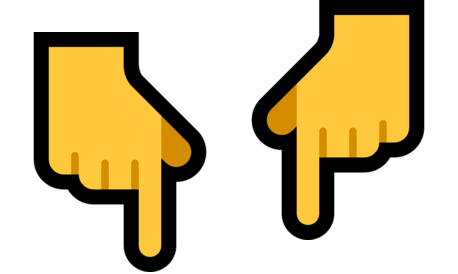 remember tofollow us!
remember tofollow us!
Editor’s Circle: Sharing Good Articles
1. 6 Affordable and Effective Medicines from Pharmacies that Staff Generally Won’t Recommend, Worth Noting
2. Pharmacopoeia: 3 Traditional Chinese Herbs Have Been Banned! They Have Renal Toxicity and Can Cause Cancer, Don’t Assume They Are Good Medicines
3.When AIDS Approaches, These 3 Signals Will Remind You, Don’t Be ‘Impulsive’ and Delay Your Health
4.AIDS is Best at ‘Disguising’ Itself; If There Are 3 Abnormalities in the Mouth, the Virus Has Already ‘Gone Wild’
Like is a form of encouragement Share to spread joy
After reading, click“Looking”

